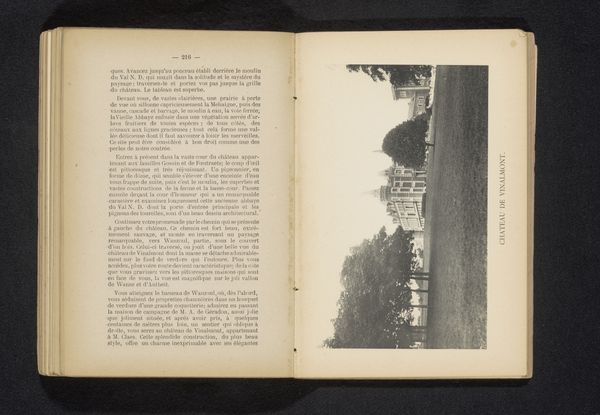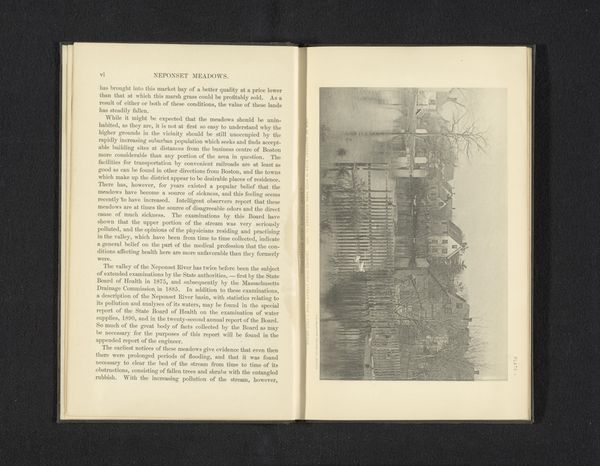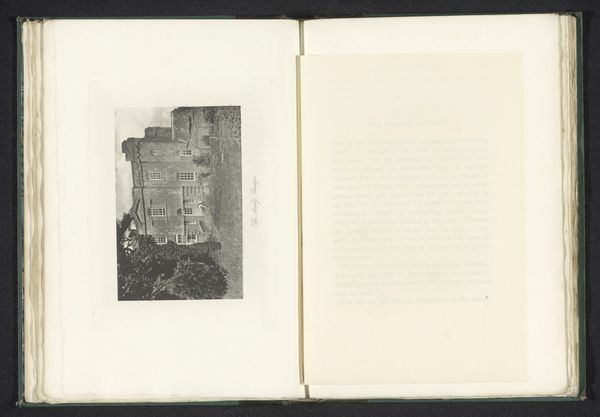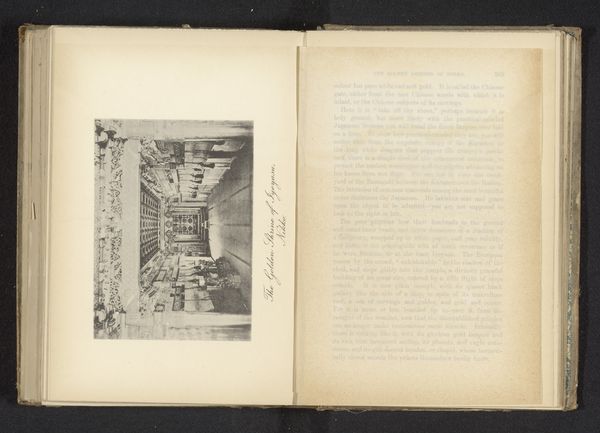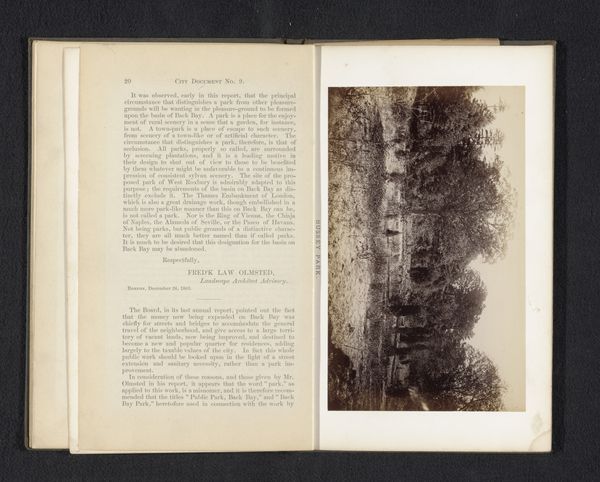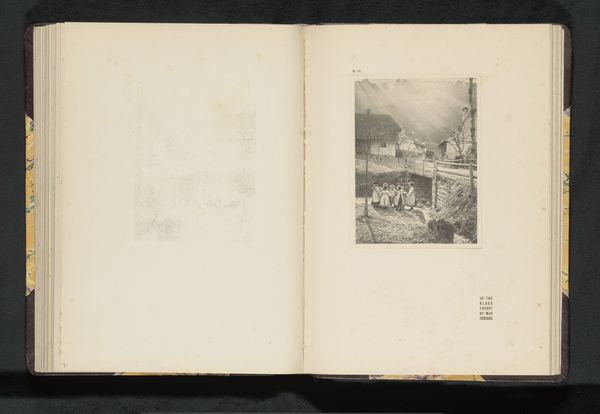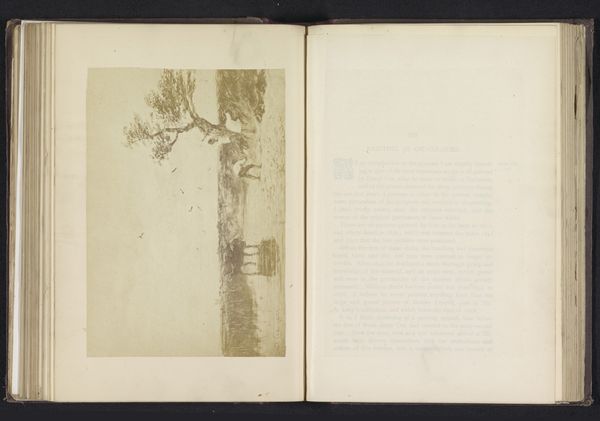
print, photography, albumen-print
# print
#
landscape
#
photography
#
albumen-print
Dimensions: height 87 mm, width 125 mm
Copyright: Rijks Museum: Open Domain
Curator: Here we have an albumen print titled "Gezicht op een klooster in Japan," which translates to "View of a Monastery in Japan," captured before 1892. What are your initial thoughts? Editor: My first impression is one of quiet contemplation. The subdued tones and blurred details create a sense of serene distance, almost dreamlike. The composition seems deliberately framed, emphasizing the structure’s integration with the natural elements. Curator: Indeed. The choice of the albumen print process significantly influences how we perceive this image. Albumen printing, popular during that era, renders a smooth surface and delicate tonal gradations. Notice how the light interacts with the architecture. It’s fascinating how light and shadow are arranged within the pictorial space. Editor: Absolutely. From a historical vantage point, the image encapsulates the Western fascination with Japanese culture during the late 19th century. Consider Douglas Sladen's, the probable photographer, role in shaping the Western perspective of Japan through art. The very act of photographing a monastery, and presenting it as an artifact in an album speaks volumes about the cultural dynamics at play. Curator: The photographic style emphasizes certain elements while obscuring others, thereby constructing a particular visual language that evokes ideas about tradition, exoticism, and spirituality. Did he perhaps try to mirror paintings done by Japanese artists? I think Sladen used an evocative contrast here, by showing that it could have just as easily been done with different brushes, ink, paper…or maybe he wanted to showcase what was able to be done through photography? Editor: And the distribution method is noteworthy: presenting these images within a book format created intimacy and implied a guided tour of sorts for the Western audience, reinforcing certain stereotypes while fueling curiosity. Think about who owned such albums and how that viewing shaped understandings. The power dynamic inherent in representing a foreign culture is key. Curator: Looking at the textural nuances created by the albumen process, it evokes such visual experience for the viewers, no matter what culture. Despite possible biases or preconceived ideas by the artist, I do believe that, simply from the photographic point of view, viewers may obtain some deeper appreciation of art, culture, religion or anything the eye allows itself to see. Editor: True. Reflecting on this, it’s remarkable how a single image, a silent "view," speaks volumes about art's technical skill and ability to present varying cultural frameworks. Curator: Precisely, blending aesthetic and historical lenses offers enriched comprehension for the viewers.
Comments
No comments
Be the first to comment and join the conversation on the ultimate creative platform.



